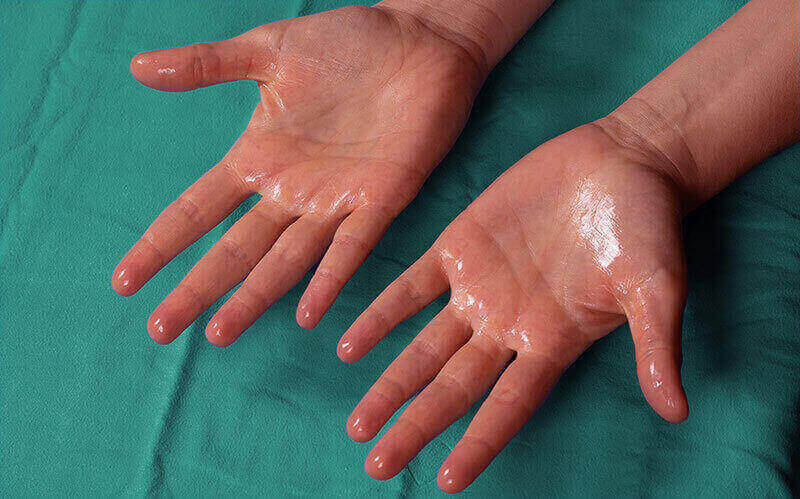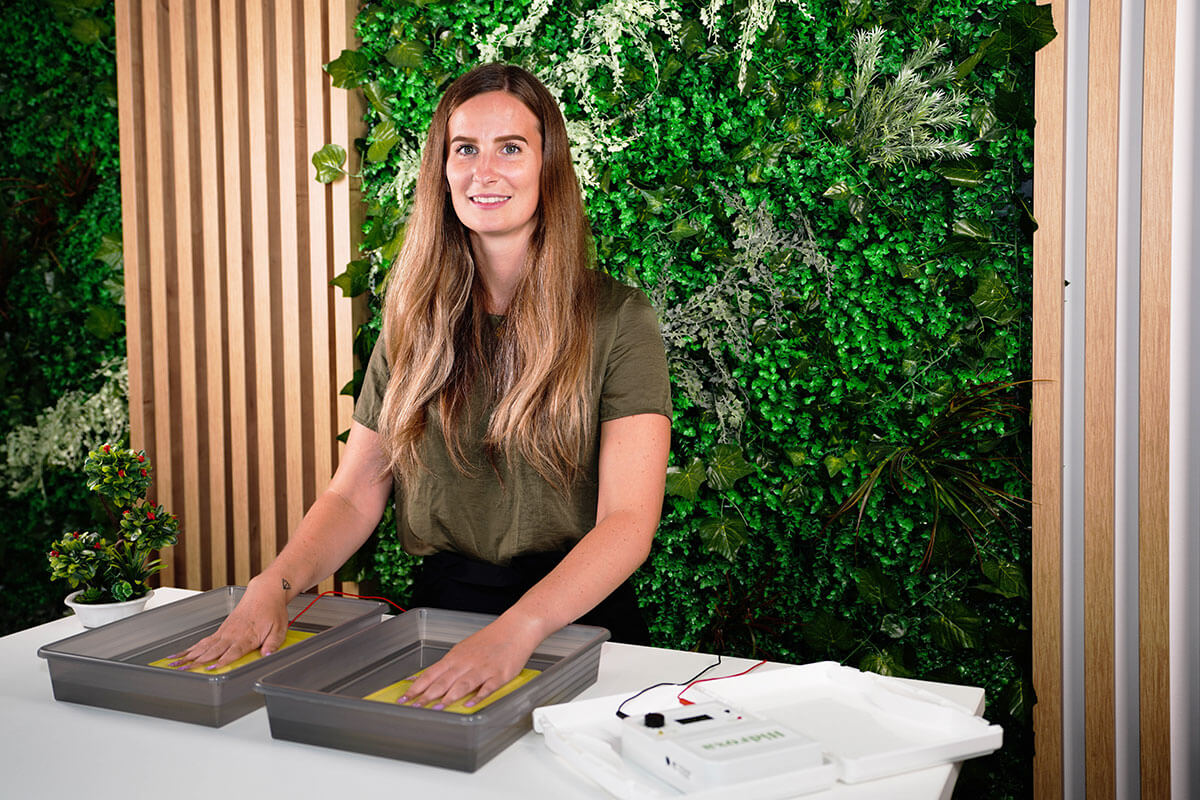Managing palmar hyperhidrosis: The best hyperhidrosis treatment for hands
Excessive sweating of the hands, known as palmar hyperhidrosis, is more than a minor annoyance; it's a challenge that affects every handshake, every touch, and numerous daily tasks. This condition overrides the body's need for temperature regulation, leading to constantly moist hands, which affects both social interactions and self-esteem. Seeking effective hyperhidrosis treatment for hands is not merely about physical comfort; it's about reclaiming the ability to navigate daily life without the constant worry of sweaty palms. The treatments for palmar hyperhidrosis are diverse, ranging from topical applications to surgical interventions, each tailored to the severity of the condition and the individual's lifestyle.
Understanding Hyperhidrosis
Hyperhidrosis is a condition characterized by excessive sweating that exceeds the body's normal requirements for temperature regulation. It affects different parts of the body such as hands, underarms, face and feet. However, the most common combination is sweaty palms and sweaty feet. Typically, symptoms begin in early childhood or adolescence and continue through their entire life. Many patients experience a tingling feeling and think their skin pores are opening prior to the onset of sweating.
There are two main types of hyperhidrosis:
- Primary hyperhidrosis of the hands tends to have a genetic component, suggesting a hereditary predisposition to overactive sweat glands. It is not caused by any other underlying causes.
- Secondary hyperhidrosis, conversely, is linked to a range of medical conditions such as diabetes, thyroid issues, or certain medications, highlighting the importance of a thorough medical evaluation to find out the cause in each case.
Identifying the precise cause holds significant importance, as it informs the selection of treatment options, which aim not only to relieve symptoms but also to target the underlying cause of the excessive sweating.
Excessive hand sweating significantly affects social, professional, and daily activities, leading to discomfort and emotional distress. The exact cause of primary hyperhidrosis remains unclear, but it's believed to involve overactivity of the sympathetic nervous system, specifically in the sweat glands. The excessive sweating seen in palmar hyperhidrosis is thought to be triggered by an overactive sympathetic nervous system, leading to sweat production that's not necessarily external factors like heat or exercise. Understanding that hyperhidrosis is a medical condition and not a result of anxiety or poor hygiene is crucial in seeking appropriate treatment and support.
Those with this condition might encounter a range of challenges, including:
- The need to constantly dry their hands
- Avoiding handshakes
- Encountering difficulties with typing, writing, and handling documents
- Struggles with applying makeup and dressing
- Hesitancy to engage in intimate interactions and social withdrawal
- Experiencing preoccupation, anxiety, and concentration issues
- Challenges with managing money or playing musical instruments
- Obstacles in receiving manicure services

Diagnostic process
The diagnostic process for palmar hyperhidrosis typically entails a comprehensive evaluation aimed at identifying any underlying causes contributing to excessive hand sweating. This often includes laboratory tests to rule out medical conditions known to trigger excessive perspiration. Additionally, healthcare providers conduct thorough assessments by inquiring about the extent to which sweating affects daily activities and the specific patterns of sweat production experienced by the individual.
Understanding the impact of sweating on various aspects of the person's life, such as work, social interactions, and personal relationships, is crucial for formulating an accurate diagnosis and developing an effective treatment plan tailored to their needs. Additionally, detailed medical history and a physical examination may be employed to further investigate the underlying factors contributing to palmar hyperhidrosis. By employing a comprehensive diagnostic approach, healthcare professionals can effectively pinpoint the root cause of excessive hand sweating and devise an appropriate management strategy to alleviate the symptoms and improve the individual's quality of life.
Exploring treatment options for Hyperhidrosis of the hands
Addressing hand hyperhidrosis effectively requires a comprehensive approach, tailored to the severity of the condition and the individual's lifestyle:
- Antiperspirants are the most accessible and first-line treatment option for managing excessive hand sweating. These products contain aluminum chloride, a compound that temporarily blocks the sweat glands' ducts, significantly reducing sweat output. For application, the palms should be dry, and applying the product at night is recommended to take advantage of the body's lower sweat production while sleeping. Over-the-counter (OTC) options, such as Certain Dri and Dove Clinical Protection, are widely available and can be effective for mild cases. For more severe hyperhidrosis, prescription-strength antiperspirants, which have a higher concentration of aluminum chloride, may be necessary. Brands like Drysol or Perspirex are commonly prescribed and can offer significant relief for those with persistent hand sweating. Additionally, creams and wipes designed for hyperhidrosis, such as Carpe Lotion and SweatBlock Wipes, provide convenient and portable options for managing symptoms throughout the day.
- Iontophoresis: A treatment specifically made for treatment of the hand and foot sweating, iontophoresis involves immersing the hands in a shallow tray of water through which a mild electrical current is passed. This process temporarily disables the sweat glands, leading to a reduction in sweating. Sessions typically last for 20 to 40 minutes. Initially, treatments may be required 5-6 times a week (everyday or every other day) until the desired level of dryness is achieved. Afterward, maintenance sessions can be spaced out to once a week or even less frequently, depending on the individual's response. Iontophoresis devices are available for home use without a prescription, allowing for flexible treatment scheduling.
- B. toxin Injections: Approved for treating severe underarm sweating, B. toxin is also used off-label for palmar hyperhidrosis. This treatment offer a temporary solution by blocking the nerves responsible for activating sweat glands in the palms. It works by blocking the nerves that activate the sweat glands, thus reducing sweating. While the procedure involves approximately 50-60 injections, it can be quite painful, even with the use of numbing creams or local anesthesia. Additionally, B. toxin's effects typically last only a few months, generally between 3 to 12 months. The effects of B. toxin are temporary, generally lasting several months, after which repeated treatments may be needed to maintain dryness. Common side effects include temporary pain or discomfort at the injection sites, weakness in the hand muscles, or flu-like symptoms. These typically resolve within a few days.
- Surgical options: ETS is considered for severe cases of palmar hyperhidrosis when other treatments haven't provided adequate relief. The surgical procedure targets the sympathetic nerves responsible for excessive hand sweating, either by cutting or clamping them. Despite its effectiveness, ETS is associated with serious side effects, including compensatory sweating, where other body parts may sweat more to compensate for the reduced hand sweating. For this reason, we strictly do not recommend it, and it is worth noting that in some countries this procedure is even prohibited.
- Home remedies and lifestyle changes: While not as potent as medical treatments, home remedies like baking soda or sage tea soaks can offer temporary relief. Lifestyle adjustments, such as stress management techniques and choosing breathable fabrics, can also play a role in managing symptoms.
Selecting the appropriate treatment involves a detailed discussion with a healthcare provider, weighing the benefits and drawbacks of each option. For many, a combination of treatments yields the best results, offering a significant reduction in sweating and an improvement in quality of life.
Success stories and testimonials
Many individuals suffering from hyperhidrosis of the hands have found relief and regained control over their lives through various treatments. For instance, John, a graphic designer, shares his experience with iontophoresis: "After years of hiding my condition, iontophoresis gave me my confidence back. The process was simple, and the results were beyond my expectations." Similarly, Emma, a professional pianist, found success with B. toxin injections. "The thought of injections in my hands was daunting, but the freedom from constant sweating has been worth it. I can now perform without worry," she explains. These stories highlight the transformative impact of effective treatment, not just on physical comfort but on emotional well-being and self-esteem.

Choosing the right treatment for You
Deciding on the best hyperhidrosis treatment for hands is a personal journey that varies from one individual to another. Factors such as the severity of the condition, lifestyle, and personal preferences play a significant role in determining the most suitable approach. Consulting with a healthcare professional who understands hyperhidrosis is crucial. They can provide valuable insights, recommend treatment options based on the latest research, and guide you through the process of managing or even overcoming excessive hand sweating.
It's important to remember that what works for one person may not work for another, and it might take some time to find the perfect solution. Some may find relief with over-the-counter antiperspirants and home remedies, while others may require medical interventions like iontophoresis, injections, or even surgery. In some cases, a combination of treatments yields the best results. Being open to different options and maintaining a positive outlook are key to finding the right treatment for your hyperhidrosis of the hands.
Conclusion
Hyperhidrosis of the hands can be a challenging condition, impacting daily activities and social interactions. However, a wide range of treatments offers hope and practical solutions to those affected. From simple home remedies and antiperspirants to advanced medical procedures, the possibilities for managing and even overcoming excessive hand sweating are better than ever. Success stories and testimonials provide encouragement, showcasing the significant improvements in quality of life that can be achieved.
We encourage anyone struggling with hyperhidrosis to seek professional advice and explore the treatment options available. Remember, you are not alone in this journey, and with the right approach, you can find relief and regain confidence. The path to dry hands and a more comfortable life begins with taking that first step towards seeking help and exploring the treatments that work best for you.